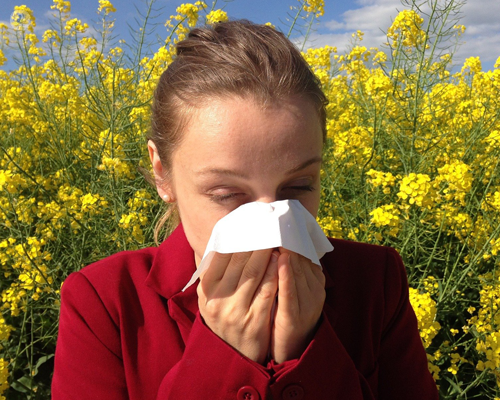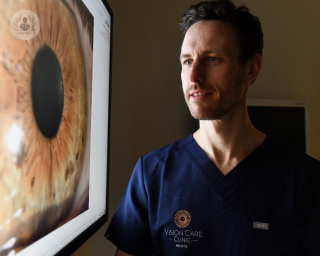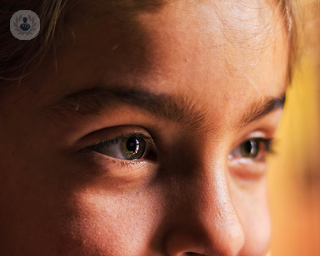Eye allergies
What are eye allergies?
Eye allergies, also known as allergic eye disease, describes a set of allergies similar to hay fever and asthma where the eyes display an excessive immune reaction to an external environmental factor.
The main types of eye allergies are:
- Acute allergic conjunctivitis
- Chronic allergic conjunctivitis (which includes hay fever conjunctivitis and vernal conjunctivitis)
- Giant papillary conjunctivitis

What are the symptoms and causes?
Acute allergic conjunctivitis is most common amongst young children playing outdoors, often triggered by long grass or pets. The symptoms include itchy, watery eyes with some eyelid swelling as well.
The symptoms of chronic allergic conjunctivitis depends on the type.
Hay fever conjunctivitis
- The most common form of allergic conjunctivitis
- Itchy, watery eyes
- Triggered by exposure to pollen (seasonal) or animals, dust and mould (perennial).
- Symptoms are generally seasonal
- Sometimes the eyelids may swell
Vernal conjunctivitis
- Often occurring in patients with additional allergies, this form of eye allergy is very severe.
- Eyes become very itchy, watery, and photosensitive and can experience a burning sensation.
- Sometimes vision can be reduced.
Giant papillary conjunctivitis
- This type of eye allergy affects those wearing contact lenses or patients with artificial eyes.
- Papillae, which are small bumps, will form on the inner upper eyelid.
- Eyes become itchy and watery, with increased mucous production.
How are eye allergies different to infectious conjunctivitis?
The symptoms of eye allergies can be very similar to those of infectious conjunctivitis, but there are a few key differences that can help when diagnosing:
- Discharge with allergic conjunctivitis is more watery, whereas it is thicker and sticky with infectious conjunctivitis.
- Allergic conjunctivitis flares up throughout the day, whereas infectious conjunctivitis is generally at its worst first thing.
- With allergic conjunctivitis, there should be no lymph node swelling, whereas with infectious conjunctivitis the lymph nodes are normally swollen and raised.
- Allergic conjunctivitis is recurrent, whereas infectious conjunctivitis is usually one-off.

How can they be prevented?
The best way to prevent allergic conjunctivitis is to avoid the allergen that triggers it. Some ways to do this include:
- Keeping windows shut
- Getting rid of any house plants or flowers that release pollen
- Removing carpet, as dust mites can live in them
- Staying indoors during hay fever season
- Having dust covers on pillows and mattresses
- Avoid wearing contact lenses if you suffer from giant papillary conjunctivitis
What is the treatment?
As well as at-home remedies, such as eye baths and using a cool cloth to compress the eyes, there are some medical treatments available. These include:
- Topical antihistamines - eye drops that help reduce swelling and itching.
- Topical decongestants - eye drops that reduce swelling by constricting blood vessels in the eye.
- Immunotherapy - allergy injections or tablets.
- Topical mast cell stabilisers - medicine that prevents the cells that release histamine. They are best used over time, rather than for rapid symptom relief.
- Corticosteroids - generally prescribed for severe allergic conjunctivitis, and are taken for just a short period.







